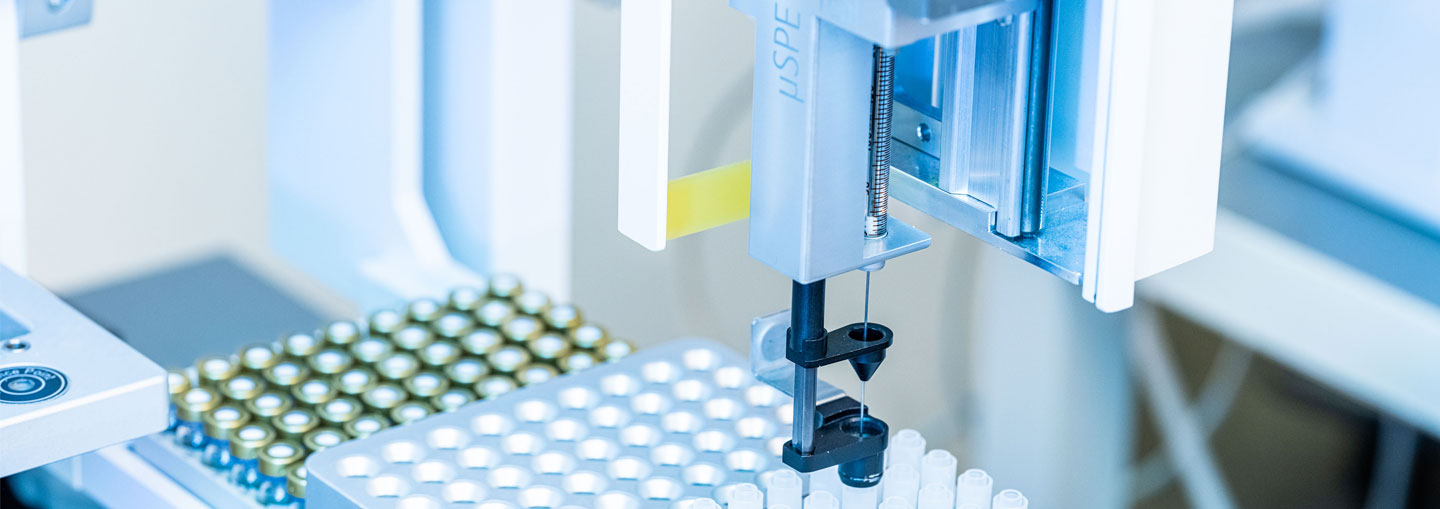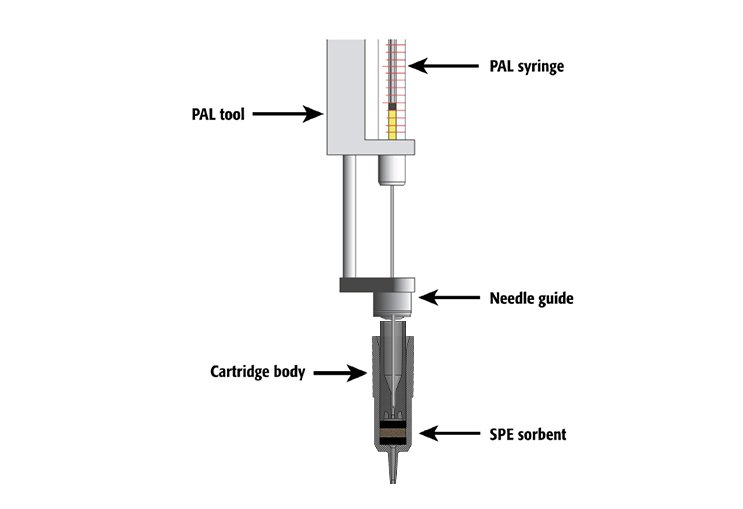
在自动化样品制备工作流程中使用微型 SPE( SPE)取代了大量溶剂的手动SPE程 序,这是绿色分析化学和实验室成本节约的 重要一步。 微型SPE小柱工作时类似小的LC 柱。仅使用微量样品或洗脱溶剂。注射器作 为溶剂“泵”工作,具有恒定的流量和压 力,提供高重复性和自动化的工作流程。
分散性SPE | 微型SPE |
|---|---|
|
|
|
|
|
|
与传统PME Fiber相比的优势:
与传统SPME相比,灵敏度高出10倍
寿命延长5倍
得益于智能技术的全面可追溯性
设计用于顶空和浸入式萃取
Analysis of Highly Polar Pesticides
Micro-SPE (uSPE) emerged as an automated green micromethod for sample preparation and clean-up in food safety, proteomics, forensic, environmental and analysis since more than ten years. Applications are wideranging and cover drugs, environmental contaminants, and, in particular, the extract clean-up in multiresidue pesticide analysis. The automation of the uSPE sample preparation steps led to the desired standardization of the applied sorbent materials for extract clean-up for the large variety of food commodities, an increase in sample throughput, and the welcome potential for offline and online hyphenation with GC/MS, LC/MS or even IC analysis.
Automated Mini‑Column Solid‑Phase Extraction Cleanup for High‑Throughput Analysis of Chemical Contaminants in Foods
This study demonstrated the application of an automated high-throughput mini-SPE cleanup for the analysis of pesticides and environmental contaminants in QuEChERS extracts of foods.
ASMS 2025 - Fully automated implementation of EPA Method 1633 for LC-MS/MS analysis of PFAS in environmental samples using a customized robotic autosampler
ASMS 2025 - Fully Automated Sensitive Quantitation of PFAS in Seafood for Regulatory Screening Using Triple Quadrupole LC/MS
Detecting trace PFAS level is challenging due to complex sample preparation like QuEChERS extraction followed by SPE cleanup, and evaporation/reconstitution. The manual steps can be labor-intensive and error-prone, affecting accuracy and reliability. This study developed a fully automated workflow for PFAS quantitation in seafood – shrimp.
Advantages of automated and miniaturized uSPE clean-up in pesticides residues analysis
Recent developments in pesticides analysis extend the well-established methods to higher productivity and reliability while minimizing consumption and exposition to harmful chemicals. A workflow was developed that allows automatic preparation of calibration standards, automatic sample dilution, and automatic clean-up of sample extracts on one instrument, showing that miniaturized automated solutions are reducing errors, improving analytical consistency and protecting the environment in one convenient approach.
Presented by:
Thomi Preiswerk, Senior Account Manager, CTC Analytics AG
Gwen Lim , Specialist for automated sample preparation, CTC Analytics
Ederina Ninga, Postdoc, Research Group for Analytical Food Chemistry, Danish Technical University
Automated Sample Preparation for pesticides using QuEChERS extraction and cleanup
The QuEChERS analysis method is a popular Solid Phase Extraction method used for the analysis of pesticide residues in food. However, there are analytical and logistical limitations during cleanup. The Webinar shows two workflow variations for high sample throughput in online GC/MS and LC/MS analysis.
Presented by:
Hans-Joachim Huebschmann, PhD, Gwen Lim and Chiew Mei Chong, CTC Analytics AG
The Power of Micro Solid Phase Extraction
This eBook explores the potential of uSPE to transform analytical workflows. It highlights the key benefits of uSPE, compares it with traditional techniques and examines its application across various industries. This resource provides a comprehensive guide for scientists and lab managers looking to optimize their sample preparation processes, achieve higher precision and embrace sustainable practices in analytical chemistry.
Walk away QuEChERS extracts clean-up
See this detailed video of the uSPE workflow for the clean-up of raw pesticides extract. The PAL uSPE Cartridge is operated in scavenger mode eluting the pesticides in a clean extract. The matrix is kept on the sorbent material. The cleaned extract can be injected without waiting time online for LC/MS or GC/MS analysis. All samples are treated on the same time axis for highest reliability.
Fully Automated QuEChERS Extraction and µSPE Clean-up of Organophosphate Pesticides in Orange Juice
Chiew Mei Chong1, Hans-Joachim Hübschmann2
1 CTC Analytics Pte. Ltd., Singapore.
2 HANS Analytical Solutions, Osaka, Japan.


